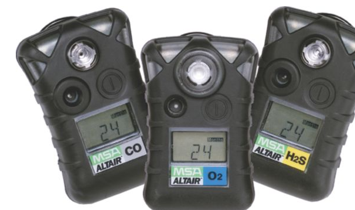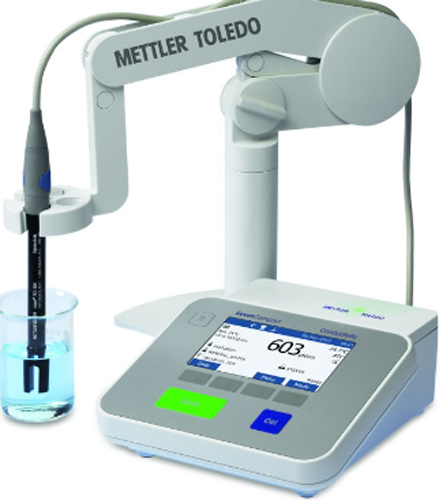
DIRECT METHODS (VISUAL METHODS)
The direct method measures the height above a zero point by any of the following methods. Direct methods for level measurement are mainly used where level changes are small and slow such as; Sump tanks and Bulk storage tanks.
Direct methods are simple to use, reliable, low cost items and generally well suitable to hazardous areas. There are four types of direct level measurement devices:
1. Dip-sticks & Dip-Rods
2. Weighted gauge tape
3. Sight Glasses, and
4. Floats.
Dip-Sticks & Dip-Rods
The dipstick needs little explanation. The liquid wets the lower end of the rod that has been dipped into it. The rod is stopped either at the top of the vessel by a protruding flange on the rod, or at the bottom of the vessel when the tip of the rod touches it.
When the rod is withdrawn, the wet/dry interface can be clearly seen and the level determined from a scale on the rod. Figure 2 shows some styles of dipsticks and dip-rods.
Weighted gauge tape
Another variation is the weighted gauge tape illustrated in figure 3. This is used in a similar fashion to the dipstick, but on deep vessels and tanks where a solid rod would be inappropriate.
Sight Glasses
There are various types of sight glass, the two most common types being used are:
1. The flat glass tubular (or reflex)
2. Magnetic.
The flat glass
The flat glass type, as shown in figure 4, is used for non pressurised vessels, It consists of a glass window or windows that forms part of the vessel. A typical application is in hot oil tanks, where excessive foam contaminated oil may be easily detected. In such applications the glass would be heat resistant.
Tubular or reflex
Tubular or reflex sight glasses,, consist of a single glass with cut prisms. Light is refracted from the vapour portion of the column and is shown generally as white colour. Light is absorbed by the liquid portion in the column and is shown generally as a dark colour. They are used mainly for non-corrosive, non-toxic inert liquids at moderate temperatures and pressures. The tube may be made of glass or transparent plastic and must be rated for the operating pressure of the vessel.
Tubular Sight Glasses
Reflex Sight Glasses
Magnetic type Sight gauges
Magnetic type Sight gauges, as illustrated in figure 7, have a float inside a non- magnetic chamber. The float contains a magnet, which rotates wafers over as the surface level increases or decreases. The rotating wafers present the opposite face, which has a different colour. It is more suitable for severe operating conditions where liquids are under high pressure or contaminated.
Magnetic type Sight gauges
Sight glasses are usually installed with shutoff valves and a drain valve for the purpose of maintenance, repair and replacement. An important safety feature of these external sight glasses is the inclusion of ball check valves within the isolation valves. The purpose of these check valves is to prevent the escape dangerous fluids if the glass breaks. Therefore it is important that the isolation valves are left fully open when the sight glass is in use, otherwise the operation of the check valves may be inhibited.
Operational considerations for Sight Glasses
The gauge must be accessible and located within visual range. They are not suitable for dark liquids. Dirty liquids will prevent the viewing of the liquid level. Glass has the obvious disadvantage of being fragile and easily damaged or broken. Therefore, this type should not be used for measuring hazardous liquids. On safe applications, tubular gauge glasses can be used.
Reflex gauges are permissible for low and medium pressure applications. For high-pressure applications or where the fluid is toxic, armoured gauges with magnetic dials should be used for safety reasons, gauge glass lengths between process connections should not exceed 4 ft.
With this type of device, good lighting is required and sometimes an illuminator may be required in dark areas. In installations where the gauge is at a lower temperature than the process, condensation may occur on the walls, making reading difficult.
Floats
Floats give a direct readout of liquid level when they are connected to an indicating instrument through a mechanical linkage. A simple example of this is the weighted tape tank gauge, illustrated in figure 8. The position of the weighted anchor against a gauge board gives an indication of the liquid level in the tank. The scale of the gauge board is in reverse order, i.e. the zero level indication is at the top and the maximum level indication is at the bottom of the gauge board.
Weighted Tank Gauge using Float Type
Floats can be used in level systems. They give an indication of the actual level, It is used also to drive level switches and level transmitters in different designs.




